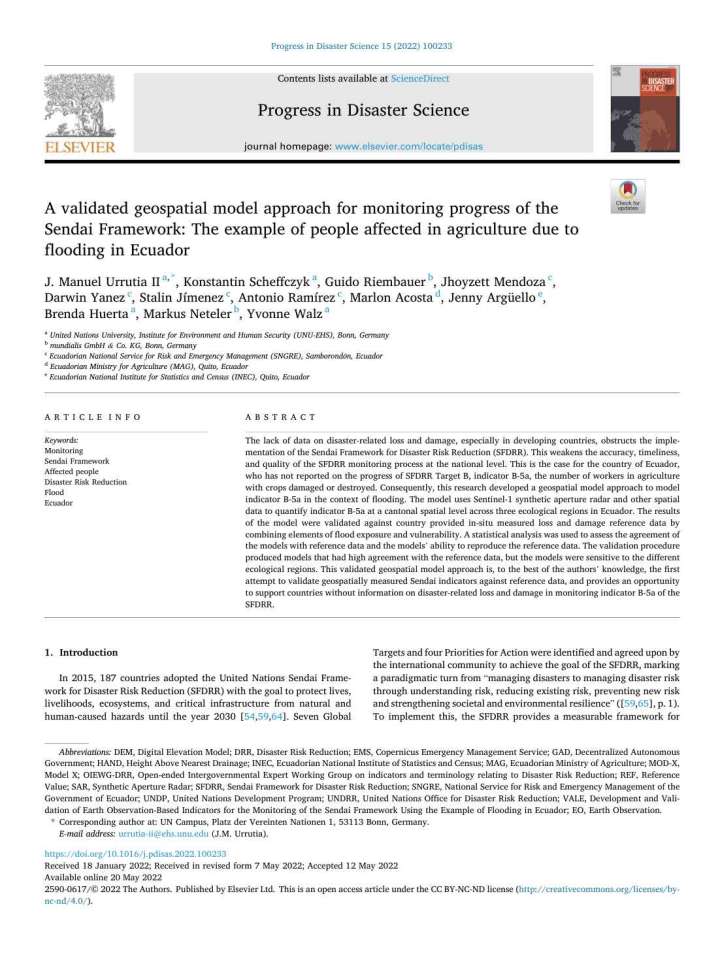A validated geospatial model approach for monitoring progress of the Sendai Framework: The example of people affected in agriculture due to flooding in Ecuador
This paper aims to generate and validate earth observation-based information products for monitoring selected indicators of the Sendai Framework for Disaster Risk Reduction in the context of flooding in Ecuador. The lack of data on disaster-related loss and damage, especially in developing countries, obstructs the implementation of the Sendai Framework for Disaster Risk Reduction (SFDRR). This weakens the accuracy, timeliness, and quality of the SFDRR monitoring process at the national level.
This is the case for the country of Ecuador, who has not reported on the progress of SFDRR Target B, indicator B-5a, the number of workers in agriculture with crops damaged or destroyed. Consequently, this research developed a geospatial model approach to model indicator B-5a in the context of flooding. It aims to (i) to further develop the automated derivation of floodplains based on Sentinel-1 data to derive a flood hazard information product in Ecuador for the year 2017; (ii) to derive a geospatial model approach to measure SFDRR Target B, indicator B-5a for the year 2017 based on the combination of flood hazard, exposure, and vulnerability to flooding in cantons of Bolívar, Los Ríos, and Napo provinces of Ecuador; (iii) to validate the EO-based Sendai indicators with in-situ reference data of actual loss and damage due to flooding; and (iv) to discuss the opportunities and limitations of this approach for monitoring SFDRR indicator B-5a in Ecuador and to advance the progress in achieving the SFDRR.
Explore further
